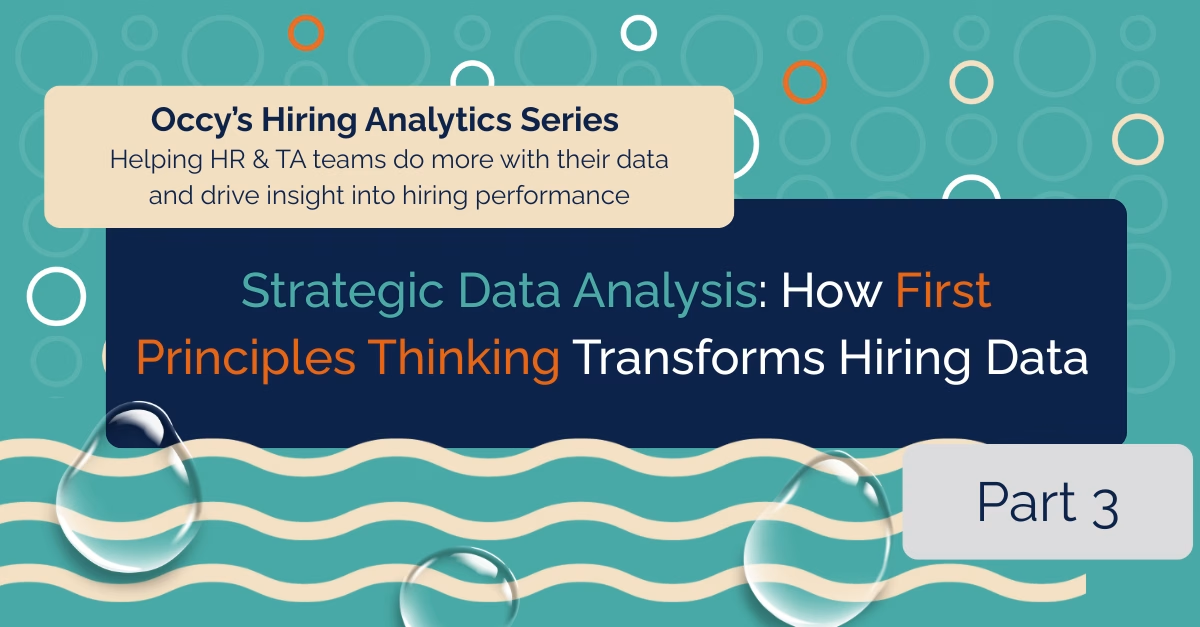Applying First Principles to Hiring
We’ll use an example, take time to hire for instance. The analogy-driven assumption might be: “Our market is competitive, so hiring always takes 45+ days.” It sounds like a fair perspective and most teams would accept the status quo. However, first principles thinking challenges that assumption head on.
First principles thinking would break it down:
- What are the actual steps (requisition, sourcing, screening, interviewing, offer)?
- Which steps or parts of our process consistently create delays?
- Which delays are structural (background checks) vs controllable (scheduling)?
When you combine first principles thinking with a true understanding of hiring metrics, you can start to evaluate your data at a much deeper level and get a deeper comprehension of how your hiring process is actually performing. Not only do you understand the gaps, but you can form a hypothesis on what to do about them.
Example: A mid-sized tech company discovered their biggest bottleneck wasn’t sourcing talent, but managers taking 10 days on average to reply to scheduling requests. The fix? A shared scheduling tool. The result? Weeks shaved off their hiring time without spending a penny more on sourcing.
Another example: An internal hiring team was experiencing low offer acceptance rates. Instead of assuming “we need to pay more,” first principles asks: “What are the root reasons candidates reject offers?” (Compensation, unclear progression, flexibility, brand perception). Often, it’s about communication and clarity, not just money.
Incremental Improvement: Small Wins, Big Impact
Once you’ve broken a problem down, it’s tempting to go for the one big solution. But in HR, big bets are risky. They take months to implement and may not pay off.
Incremental improvement is the opposite: lots of small, consistent experiments that compound over time. Think of it like compound interest: smaller gains that are made consistently can increase your savings by a drastic amount over time.
Why incremental works:
- Low risk and low cost.
- Quicker to test and adjust.
- Builds momentum and cultural buy-in.
Here’s some examples of incremental tests that an internal hiring team might run:
- Job titles: Testing whether “Customer Success Manager” attracts better applicants than “Client Services Lead.”
- Interview process: Reducing from five stages to four, then measuring drop-off and acceptance.
- Candidate communication: Sending weekly updates to candidates, even if there’s no news, to reduce drop-off.
- Job adverts: A/B testing short vs. long descriptions for completion rate impact.
Each experiment might only shift a metric by 2–3%. But over a year, those improvements compound. When most teams are time poor and drowning in admin, incremental tests are much easier to plan, implement and measure compared to larger initiatives that create significant change.
So, where should hiring leaders start? We’ve got a few ideas 👇
#Strategic #Data #Analysis #Principles #Incremental #Improvement #Transform #Hiring
